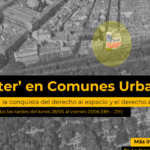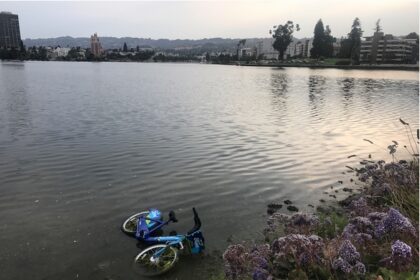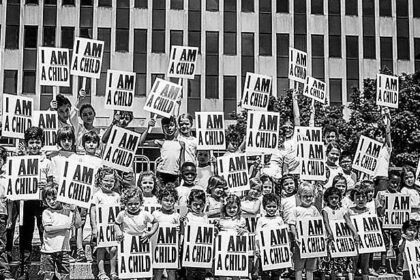Yes, but Not Quite So: Contemporary Art and Activism in Mexico, 2008-2018
Alberto López Cuenca
Violence has been a frequent political expediency in contemporary Mexico at least since the massacre of students demonstrating against the government’s authoritarianism in Tlatelolco Square on October 2nd 1968.[1] The intertwining of contemporary artistic practices and activism during and after the student’s protest in 1968 was notorious, and the way in which contemporary art and activism have responded to violence and social upheaval ever since has changed over the course of the years. Hence the reconfiguration of the local artistic scene in Mexico City after the 1985 earthquake, or the involvement of all ranks of artists with the Zapatista (EZLN) uprising in 1994, or the turn to street art and collectivism after Oaxaca’s 2006 revolt. More extreme violence has marked life in Mexico for the last 10 years. The spread to society at large of a “war on drugs” declared in 2006 –notoriously demanded and sponsored by the U.S. government [2] – has resulted in the death of more than 250,000 people[3] and the disappearance of nearly 33,000.[4] How, then, have contemporary art and activism overlapped in the wave of violence that has swept Mexico during the last 10 years?

In 2007, the Museum of Science and Art (MUCA), which is part of the largest public university in the country, presented the exhibition La era de la discrepancia: Arte y cultura visual en México, 1968-1997.[5] This was an ambitious curatorial project involving a 30-year overview of Mexican visual culture that had engaged with “cultural and political changes.” Leaving aside its flaws, some of the works included in La era de la discrepancia (The Age of Disagreement) caused an increased interest in more politicized and experimental conceptual art practices made in Mexico since the 1970s. This kind of work had been conspicuously neglected by mainstream institutions but since then it has become more commonplace in curatorial narratives and the aesthetic vocabulary of young artists. The perception is that the mainstream art world can comfortably make room for these politically charged initiatives. In this sense, the role of corporations in showcasing contemporary art and the sanctioning of politically engaged projects by conventional institutions have meant that “social issues” are now regularly invoked in the grand venues of the art world without necessarily challenging its structure or its functioning.
There have obviously been struggles in which artistic practices and activism have promisingly blurred those institutional boundaries. In May 2012, in the wake of the Arab Spring and the Occupy movement, the movement #YoSoy132 emerged. It started as a student-led protest against the political manipulation of commercial TV during the presidential election. Its demands soon connected with larger social concerns –political corruption and impunity, violence and vulnerability – and it translated nationally and internationally into demonstrations, pronouncements and the tactical use of media. A key in #YoSoy132 was that it managed to articulate a heterogeneous set of social demands.This articulation was largely visible through the work of art students and designers by means of digital media and cultural appropriation. [6]However, it was the kidnapping and disappearance of 43 students from Ayotzinapa’s Rural Teachers School on September 2014 that provoked the most notorious national and international outcry. Huge demonstrations took place in Mexico and abroad. Ayotzinapa’s 43 students became a symbol of the atrocities, incompetence and impunity that have overwhelmed Mexico for the last decade. The involvement of artists and activists produced a huge number of collaborations and interventions in public spaces. Yet, neither #YoSoy132 nor the case of the 43 students have led to the kinds of deep reorganization of activist artistic practices that happened in the wake of the 1968 protest, the EZLN uprising in 1994, or the Oaxaca revolt in 2006.

Alberto López Cuenca is Reader in the Master’s Program in Art and Aesthetics at the
Benemérita Universidad Autónoma de Puebla (Mexico), where he teaches
contemporary art theory. He has been visiting scholar at Columbia University and
Goldsmiths University of London. His research interests are Contemporary art theory,
Intellectual Property and new cultural form, and creative labour and postfordism. He has
widely published and lectured on these topics, especially in Latin America. His
contributions have been published, among others, in Afterall, ARTnews, Culture
Machine, Parse and Revista de Occidente. He is co-editor of two books in Spanish:
Propiedad intelectual, nuevas tecnologías y libre acceso a la cultura (Centro Cultural
de España/UDLAP, 2008) and ¿Desea guardar los cambios? Propiedad intelectual y
nuevas tecnologías (CCE Córboba, 2009). His most recent book is Los comunes
digitales. Nuevas ecologías del trabajo artístico, published by Centro de Cultura Digital
in 2016.
Endnotes
[1] Ivonne del Valle and Estelle Tarica,“Radical Politics and/or the Rule of Law in Mexico”, Política Común, Volume 7, 2015. https://quod.lib.umich.edu/p/pc/12322227.0007.001/–radical-politics-andor-the-rule-of-law-in-mexico?rgn=main;view=fulltext;q1=mexico
[2] https://www.state.gov/j/inl/merida/
[3] Eli Meixler, “With Over 29,000 Homicides, 2017 Was Mexico’s Most Violent Year on Record”, Time, January 22, 2018.
[4] Azam Ahmed, “In Mexico, not Dead. Not Alive. Just Gone”, New York Times, Nov. 20, 2017.
[5] Shortly after this show the University, UNAM, opened its own and impressive Museum of Contemporary Art in 2008 that has hosted numerous politically charged and influential exhibitions –such as the work of Forensic Architecture and Chto Delat– and mainstream ones –including Yves Klein and Anish Kapoor.
[6] Some of their work can be seen here:http://cartel132.tumblr.com/ and http://rexiste.org/rexistemx.
[7] A survey of this surge is the topic of meetings such as Boomerang, that took place in different venues such as La quiñonera and Casa del Lago in 2014. There is no point in listing all these projects here since there have been dozens opening (and closing) in the last few years throughout Mexico. But it is worth mentioning some of the most well-known:La Curtiduría, Espacio Zapata and Casa Rosa in Oaxaca; Lugar Común in Monterrey and PAOS in Guadalajara; SOMA, Cráter invertido and Bikini Wax in Mexico City.
[8] Since 2009 Rhizomática is seeking to “make alternative telecommunications infrastructure possible for people around the world dealing with oppressive regimes, the threat of natural disaster, or the reality of living in a place deemed too poor or isolated to be covered by commercial initiatives” (https://www.rhizomatica.org). While hackers, hacktivists and free software users are regulars at the Rancho to experiment politically with digital technologies and new forms of organization (https://ranchoelectronico.org). And Laboratorio de Interconectividades (Interconnectivities Laboratory) seek to “germinate micropolitical experimentation ecosystems that interrogate, interpellate and subvert the ways in which we relate to each other and organise: how we communicate, in what ways we inhabit technologies and make sense, knowledges and affects” (https://archive.org/details/laboratorio-de-interconectividades-cuerpo-parlantes-video-dic-2014).











